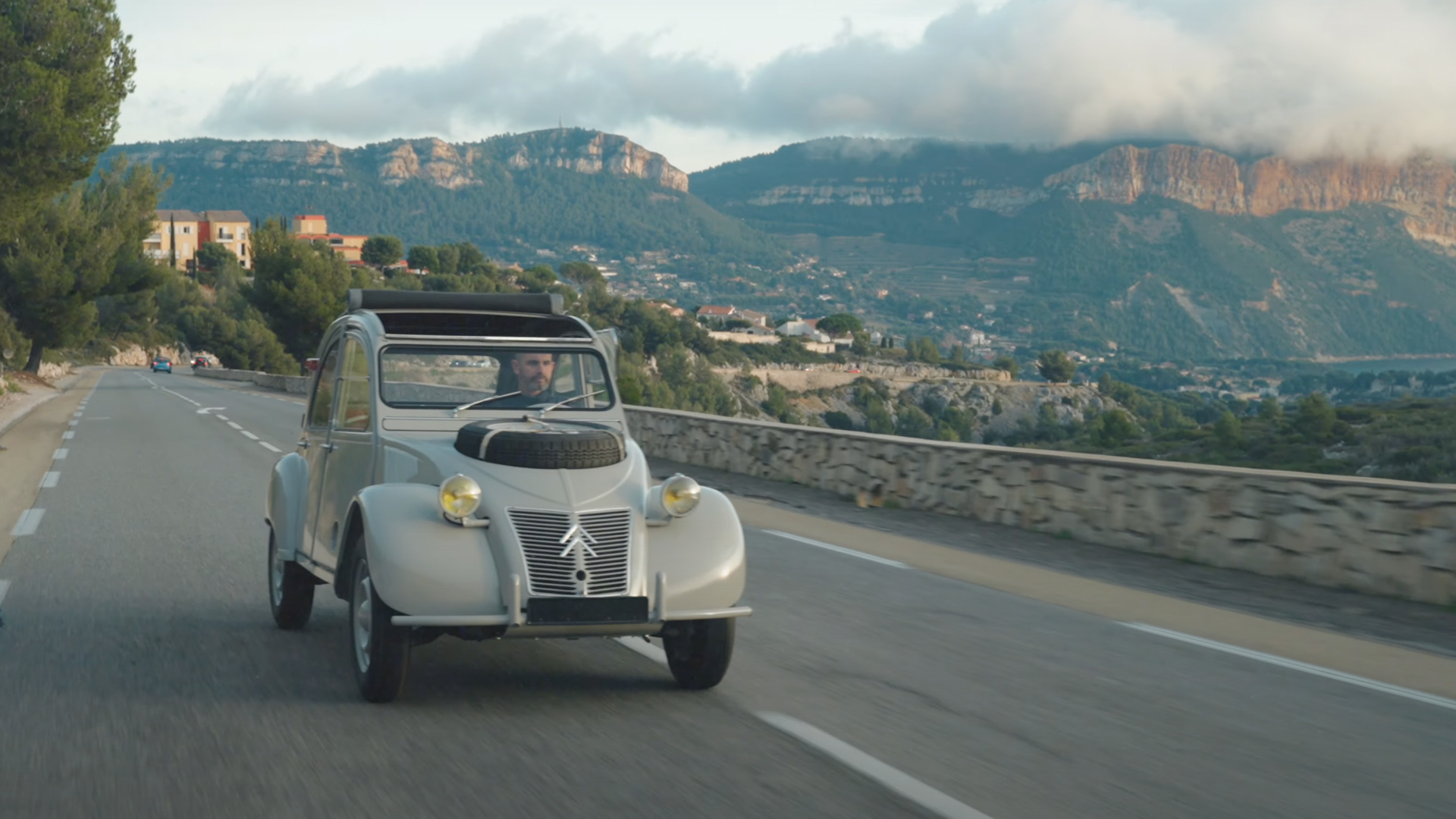

Like many of you, I often dream about what my warehouse full of cars would look like if I were Jay Leno-rich. Sure, there’d be a few exotic supercars, new and old, and a couple of luxury rides. But mostly it would be obscure, typically very slow oddballs like this twin-engine Citroen 2CV 4×4 Sahara. Delightful little weirdos like these are what truly get both my brain and heart going.
Jonny Smith, host of The Late Brake Show, drove a Citroen 2CV 4×4 Sahara in his latest video, demonstrating its strange brilliance in the process. Built in 1960, the Citroen 2CV Sahara (the 4×4 name didn’t arrive until later model years) was made for French oil prospectors in North Africa who needed something that could handle rougher terrain and climb steeper grades than the standard 2CV. So rather than replace the tiny air-cooled 425cc flat-twin engine up front, which powered the front wheels, Citroen just stuffed another 425cc flat-twin in the trunk for rear wheels, giving it two engines.


Remember, this was 1960, not 1910. Four-wheel drive had been a thing for decades at that point. Why didn’t Citroen just give it a larger engine with four-wheel drive? The company didn’t have another engine to use in the 2CV at the time, and its existing flat-twin wasn’t capable of handling a transfer case, additional driveshaft, and two more driven wheels. So the simplest and most economical way to make the 2CV four-wheel drive was to just double its engines. Of course, an engine in the trunk kind of ruins any cargo space back there, so Citroen had to develop a different hood with a cutout for the spare wheel. And voilà, a four-wheel drive 2CV was born.
Each engine also has its own manual gearbox, hydraulic clutch, and fuel tank. However, both engines and all of their accoutrement are synchronized when running, so everything is controlled with one throttle pedal, one clutch pedal, and one shifter. So despite the Sahara’s mechanical complexity, it’s as easy to use as a normal 2CV. But if one engine goes down, the other can handle everything, making it perfect for a rugged, unforgiving environment. If you need to run just the front engine, the rear gearbox can be disengaged with a simple lever, to let the rear wheels turn freely. One of my favorite touches is the rear mounted fan, which gives off GMA T.50 vibes.

With both engines fired up, it’s loud inside the tin can-like 2CV. And even with its plurality of engines, 27 combined horsepower means it’s still painfully slow, even if it’s significantly quicker than 2CVs typically are. Nevertheless, it looks like a blast to drive, glacial pace and interior ruckus aside. Just like with the best sports cars and supercars in the world, every trip in the 2CV 4×4 Sahara, no matter how short or long, would be an exciting adventure.
The twin-engine 2CV is incredibly rare, as only around 100 were ever made, so they aren’t cheap and can cost anywhere between $100,000 to $200,000. However, if I were a rich man, there’s a 100% chance I’d have one of these in my warehouse. No one does obscure automotive innovation like the French, and the 2CV 4×4 Sahara is one of the finest examples of that.

Got tips? Send ’em to tips@thedrive.com